 W
W3M was a goal first proposed in the early 1980s by Raj Reddy and his colleagues at Carnegie Mellon University (CMU) as a minimum specification for academic/technical workstations: at least a megabyte of memory, a megapixel display and a million instructions per second (MIPS) processing power. It was also often said that it should cost no more than a "megapenny" ($10,000).
 W
WThe Advanced Weather Interactive Processing System (AWIPS) is a technologically advanced processing, display, and telecommunications system that is the cornerstone of the United States National Weather Service's (NWS) operations.
 W
WThe AT&T UNIX PC is a Unix desktop computer originally developed by Convergent Technologies, and marketed by AT&T in the mid- to late-1980s. The system was codenamed "Safari 4" and is also known as the PC 7300, and often dubbed the "3B1". Despite the latter name, the system had little in common with AT&T's line of 3B series computers. The system was tailored for use as a productivity tool in office environments and as an electronic communication center.
 W
WThe Atari Falcon030, released in 1992, was the final personal computer product from Atari Corporation. A high-end model of the Atari ST line, the machine is based on a Motorola 68030 CPU and a Motorola 56000 digital signal processor, a feature which distinguishes it from most other microcomputers of the era. It includes a new VIDEL programmable graphics system which greatly improves graphics capabilities.
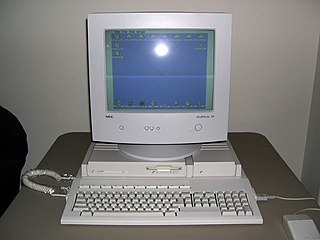 W
WThe Atari TT030 is a member of the Atari ST family, released in 1990. It was originally intended to be a high-end Unix workstation, but Atari took two years to release a port of Unix SVR4 for the TT, which prevented the TT from ever being seriously considered in its intended market.
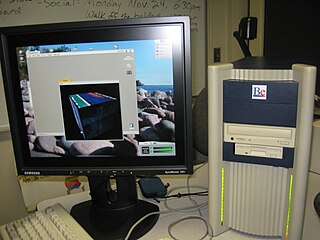 W
WThe BeBox is a dual CPU personal computer, briefly sold by Be Inc. to run the company's own operating system, BeOS. It has PowerPC CPUs, its I/O board has a custom "GeekPort", and the front bezel has "Blinkenlights".
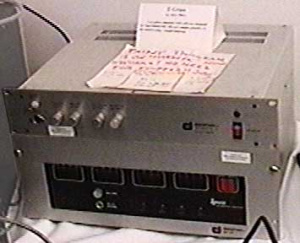 W
WThe Datamax UV-1 is a pioneering computer designed by a group of computer graphics artists working at the University of Illinois at Chicago, known as the Circle Graphics Habitat. It was primarily the brainchild of Tom DeFanti, who was trying to build a machine capable of running his GRASS programming language at a personal computer price point, a project they referred to as the Z-Box. As time went on the project evolved into a machine intended to be used to make high-quality color graphics for output to videotape, and later as a titling system for use by cable television companies. It represents what seems to be the first dedicated graphics workstation.
 W
WDell Precision is a series of computer workstations for CAD/architecture/CG professionals, or as small-scale business servers.
 W
WHP 9000 is a line of workstation and server computer systems produced by the Hewlett-Packard Company (HP). The native operating system for almost all HP 9000 systems is HP-UX, which is based on UNIX System V. The HP 9000 brand was introduced in 1984 to encompass several existing technical workstation models previously launched in the early 1980s.
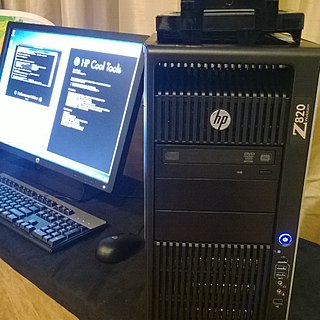 W
WHP Z is a series of professional workstation computers developed by HP. The first-generation desktop products were announced in March 2009, replacing HP's xw-series workstations. The product line expanded to mobile with the announcement of ZBook in September 2013, replacing HP's EliteBook w-series mobile workstations. The Z workstations mainly compete against Dell Precision workstations, Lenovo ThinkStation or ThinkPad P series workstations, as well as Apple Mac Pro or MacBook Pro.
 W
WThe IRCAM Signal Processing Workstation (ISPW) was a hardware DSP platform developed by IRCAM and the Ariel Corporation in the late 1980s. In French, the ISPW is referred to as the SIM. Eric Lindemann was the principal designer of the ISPW hardware as well as manager of the overall hardware/software effort.
 W
WThe DISER Lilith is a custom built workstation computer based on the AMD 2901 bit-slice processor, created by a group led by Niklaus Wirth at ETH Zürich. The project started in 1977 and by 1984 several hundred workstations were in use. It had a high resolution full page display, a mouse, a laser printer interface, and a network interface. Its software was written completely in Modula-2 and included a relational database program called Lidas.
 W
WLisp machines are general-purpose computers designed to efficiently run Lisp as their main software and programming language, usually via hardware support. They are an example of a high-level language computer architecture, and in a sense, they were the first commercial single-user workstations. Despite being modest in number, Lisp machines commercially pioneered many now-commonplace technologies, including effective garbage collection, laser printing, windowing systems, computer mice, high-resolution bit-mapped raster graphics, computer graphic rendering, and networking innovations such as Chaosnet. Several firms built and sold Lisp machines in the 1980s: Symbolics, Lisp Machines Incorporated, Texas Instruments, and Xerox. The operating systems were written in Lisp Machine Lisp, Interlisp (Xerox), and later partly in Common Lisp.
 W
WThe NeXTcube is a high-end workstation computer developed, manufactured, and sold by NeXT from 1990 until 1993. It superseded the original NeXT Computer workstation and is housed in a similar cube-shaped magnesium enclosure. The workstation runs the NeXTSTEP operating system and was launched with a US$10,000 list price.
 W
WThe NeXTcube Turbo was a high-end workstation computer developed, manufactured and sold by NeXT. It superseded the earlier NeXTcube workstation and was housed in the same cube-shaped magnesium enclosure. The workstation ran the NeXTSTEP operating system.
 W
WNeXTstation is a high-end workstation computer developed, manufactured and sold by NeXT from 1990 until 1993. It runs the NeXTSTEP operating system. The NeXTstation was released as a more affordable alternative to the NeXTcube at about US$4,995 or about half the price. Several models were produced, including the NeXTstation (25 MHz), NeXTstation Turbo (33 MHz), NeXTstation Color (25 MHz) and NeXTstation Turbo Color (33 MHz). In total, NeXT sold about 50,000 computers, making the NeXTstation a rarity today.
 W
WThe Pixar Image Computer is a graphics computer originally developed by the Graphics Group, the computer division of Lucasfilm, which was later renamed Pixar. Aimed at commercial and scientific high-end visualization markets, such as medicine, geophysics and meteorology, the original machine was advanced for its time, but did not sell in quantity.
 W
WThe Quantel Paintbox is a dedicated computer graphics workstation for composition of broadcast television video and graphics. Produced by the now-defunct British production equipment manufacturer Quantel, its design emphasized the studio workflow efficiency required for live news production. At a price of about $150,000 per unit, they were used primarily by large TV networks such as NBC, while in the UK, Peter Claridge's company CAL Videographics was the first commercial company to purchase one. Following its initial launch in 1981, the Paintbox revolutionised the production of television graphics.
 W
WThe R1000 was a workstation released in 1985 by Rational Software for the design, documentation, implementation, and maintenance of large software systems written using the Ada programming language. The R1000 featured an extensive tool set, including:an Ada-83-compatible program design language an integrated development environment that doubled as an operating system shell automatic generation of design documentation source-language debugging interactive design-rule checking and semantic analysis incremental compilation configuration management and version control.
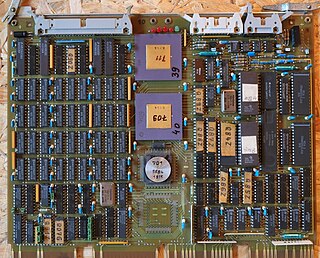 W
WThe K 1820, full name RVS K 1820, cipher in the SM EVM of the former COMECON countries SM 1720, was a workstation developed in East Germany. VEB Robotron Elektronik Dresden began development of the K 1820 in 1986 and it went into serial production in 1990.
 W
WThe Sony NEWS is a series of Unix workstations sold during the late 1980s and 1990s. The first NEWS machine was the NWS-800, which originally appeared in Japan in January 1987 and was conceived as a desktop replacement for the VAX series of minicomputers.
 W
WThe SPARCstation, SPARCserver and SPARCcenter product lines are a series of SPARC-based computer workstations and servers in desktop, desk side (pedestal) and rack-based form factor configurations, that were developed and sold by Sun Microsystems.
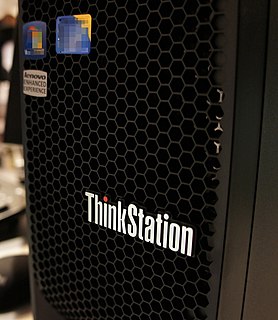 W
WThe ThinkStation products from Lenovo are professional workstations designed for high-end computing. In 2008, Lenovo expanded the focus of its "THINK" brand to include workstations, with the ThinkStation S10 being the first model released. In 2014, Lenovo introduced the P Series workstations.
 W
WWhitechapel Computer Works Ltd. (WCW) was a computer workstation company formed in the East End of London, United Kingdom in April 1983, with investment from the Greater London Enterprise Board and the Department of Trade and Industry.
 W
WA workstation is a special computer designed for technical or scientific applications. Intended primarily to be used by one person at a time, they are commonly connected to a local area network and run multi-user operating systems. The term workstation has also been used loosely to refer to everything from a mainframe computer terminal to a PC connected to a network, but the most common form refers to the class of hardware offered by several current and defunct companies such as Sun Microsystems, Silicon Graphics, Apollo Computer, DEC, HP, NeXT and IBM which opened the door for the 3D graphics animation revolution of the late 1990s.
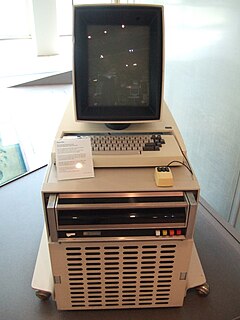 W
WThe Xerox Alto is the first computer designed from its inception to support an operating system based on a graphical user interface (GUI), later using the desktop metaphor. The first machines were introduced on 1 March 1973, a decade before mass-market GUI machines became available.
 W
WXerox Daybreak is a workstation computer marketed by Xerox from 1985 to 1989.
 W
WThe Xerox Star workstation, officially named Xerox 8010 Information System, was the first commercial personal computer to incorporate technologies that have since become standard in personal computers, including a bitmapped display, a window-based graphical user interface, icons, folders, mouse (two-button), Ethernet networking, file servers, print servers, and e-mail.